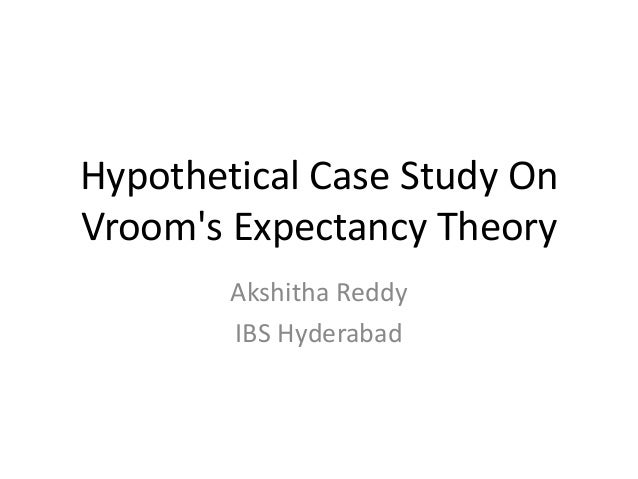Vroom 1964 Expectancy Theory Pdf To Word
Define motivation. Use a personal example to explain how the expectancy theory of motivation works. Include in your essay a discussion of valence, expectancy and instrumentality. Firstly,I personally feel that we need to understand what motivation is before explaining the theory behind this factor. DEFINITION OF MOTIVATION:- In simple words,motivation is the process of encouraging employees to direct their best efforts towards the accomplishment of organizational goals.It is a word prominently used to clarify why and how individuals get inspired for the work they do. A few therapists and researchers view motivation as the element that decides conduct and behaviour, as communicated in the expression 'all behaviour is motivated' (World Book, 1992).
Incentive theory distinguishes itself from other motivation theories, such as drive theory, in the direction of the motivation. In incentive theory, stimuli. In terms of behaviorism, incentive theory involves positive reinforcement: the reinforcing stimulus has been conditioned to make the person happier. In organisational behavior study, expectancy theory is a motivation theory first proposed by Victor Vroom of the Yale School of Management in 1964. The expectancy theory says that individuals have different sets of goals and can be motivated if they have certain expectations. Expectancy theory is about the mental processes regarding choice, or choosing. It explains the processes that an individual undergoes to make choices. In the study of organizational behavior, expectancy theory is a motivation theory first proposed by Victor Vroom of the Yale School of Management. View: the use of the correlational material for the validity of expectancy theory is discussed. Expectancy theory (Vroom, 1964) has held a major position in the study of work motivation. Vroom's (1964) Valence - Instrumentality - Expectancy Model (VIE model), in particular, has been the subject of numerous empirical studies.
A few researchers also view motivation as the variable that stimulates human behaviour. As per this perspective it is clearly identified that although our skills,habits and abilities provides us direction and guidance but motivation is the main force that gives us the vitality or energy to make ourselves productive to achieve the desired goals of the organization. EXPECTANCY THEORY OVER VIEW:- The Expectancy Theory of Motivation is a behavioral direction process theory (Porter & Lawler, 1968; Vroom, 1964) that we can always find at work in any association that has workers. Most workers come to work in light of the fact that they get paid, doesn't make a difference in the event that they love and enjoy the kind of work they are doing. Appreciating the work is another advantage all together. Workers for the most part settle on decisions from the opportunities that are accessible and the likelihood of acknowledging profitable results. This mentality aides decide the amount of vitality and energy a worker is going to use in accomplishing these objectives. Solaris x86 download.
Vrooms Model Of Expectancy Theory

Victor Vroom Expectancy Theory Pdf
The three key segments and connections in the expectancy theory of motivation are expectancy, instrumentality, and valence and all these three components are linked to each other.This theory is basically a combination of perpetual and behavioral aspects of many other theories. EXPECTANCY THEORY COMPONENTS Expectancy theory is comprised of three components: Expectancy, Instrumentality, and Valance. THREE COMPONENTS OF EXPECTANCY THEORY:- In order to achieve motivation in its fullest sense a hurdle of creating strong relationship between the three components of this theory must be achieved i.e.